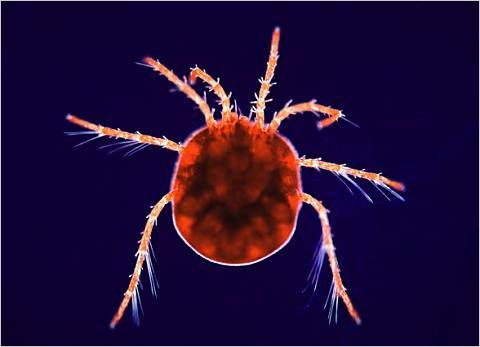 Hydracarina.
Hydracarina.
Water mites can usually be found around the edges of ponds and lakes, either swimming in the vicinity of submerged plants or foraging on their leaves and stems. They are often brightly coloured, most often some shade of red or green, although blue, yellow and tan colours are also seen. The adults are rarely larger than about 2mm or smaller than 0.5mm. The largest known varieties can reach 8mm.
Having eight legs and a pair of palps, they can appear at first to resemble tiny spiders, but closer inspection reveals that what would be cephalothorax and abdomen in a spider is in the water mites fused into a single body part having no sign of segmentation.
They are almost exclusively freshwater in their habitat, and whilst a few are parasitic upon such creatures as the freshwater mussel, most are free-living and carnivorous. These seize upon worms, small crustaceans and small insects encountered in their foragings, and use their penetrating mandibles (homologous to the chelicera of the spiders) to pierce the cuticle of the prey and suck out its juices.
There are also less active and less conspicuously coloured mites which spend their time crawing sluggishly amongst the plant debris of the pond floor (see below), and may be present in large numbers.
 |
This water mite was found among the bottom sediments of the pond, foraging slowly in organic detritus, much of which seems to consist of fragments of dead crustacean cuticles. These mites share many more structural similarities with dustmites and spider mites than their more colourful and active relatives as exampled in the picture above.
Darkfield, x100.
|
More notes on the water mites will follow when more mites present themselves to be photographed.


